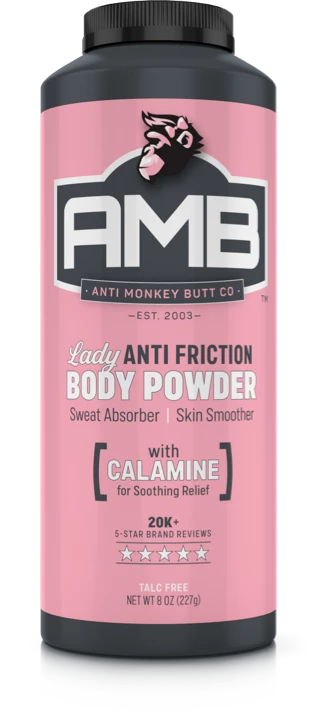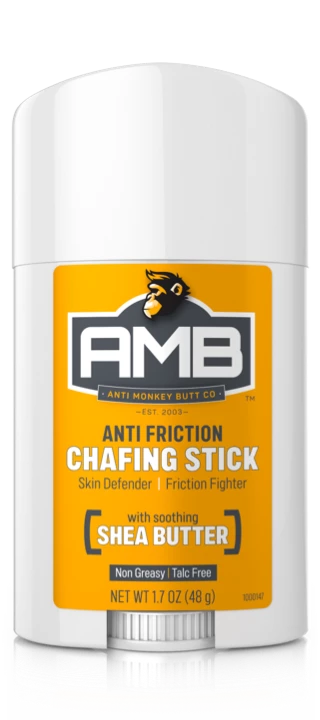Say Goodbye to Chub Rub: Tips for Treating and Preventing Chafing
If you have skin and like to move, especially on beautiful, warm summer days, you are at risk for “chub rub.” (So, yeah, like everyone.)
Don’t be shocked or embarrassed, “chub rub” is very common and anyone can experience it. Whether you’re a marathon runner, beach bum, or simply a hard worker, skin can sometimes rub against itself enough to cause redness, a burning or hot feeling, itching, bumps, pain, tingling, swelling, and even blisters or bleeding. In serious cases, rubbing can lead to secondary skin infections, scarring or skin discoloration.
Thankfully, you can care for chub rub relatively easily and prevent it from coming back.
Although it’s often called chub rub, this potentially painful skin condition is really more accurately termed “chafing” or “friction burn” and it’s not indicative of your fitness or weight. We often hear of chub rub in reference to inner thighs rubbing against each other, but chub rub can happen anywhere there’s skin-on-skin contact or skin folds — especially if heat and moisture (like sweat or humidity) is added to the mix and no matter your body type.
Common areas for skin chafing to occur are:
- Inner thighs. Frequently in summer when wearing dresses, skirts, or short shorts, or when running. More common in women but can afflict men with muscular thighs.
- Underarms or back of the arms. Especially in runners and triathletes or people who wear tank tops, sports bras or bikinis, or engage in activities with repetitive arm motions.
- Between the buttocks. Common among athletes and outdoors-people – including hikers, backpackers, ruckers, cyclists, rowers, and basketball or soccer players.
“Chub” isn’t, however, always to blame. Painful chafing can also occur when skin rubs against rough, too loose, too tight, or wet clothing or the seams of clothing, especially at the inner thighs and underarms, in the groin, on the feet (due to too tight or too loose socks or shoes), along waist bands and bra lines, under the breasts, and at the nipples (particularly among breastfeeding mothers). Athletes engaging in intense exercise and workers may also experience chafing due to their specialized and protective equipment, including cyclists, triathletes, wrestlers, rowers, football, hockey and lacrosse players, construction workers… and the list goes on.
Regardless of where you experience chafing, or why, there are some simple things you can do to help it heal and prevent it from coming back.

- Change out of sweaty, damp, or wet clothing as soon as possible and wash chafed skin with cool or lukewarm (not hot) water and mild soap. Pat dry.
- For skin that is already chafed and irritated, apply (and reapply often) a gentle skin cream, ointment, gel, or lubricating stick (like Anti Monkey Butt with soothing shea butter and almond oil) that will act as a protective barrier and anti-friction lubricant. If chafing is severe, refrain from activities or from wearing clothing that will cause more chafing. Allow time for this skin to heal. Keep the area clean and watch for signs of a secondary infection (such as worsening pain or swelling, expanding redness, fever, or pus). Contact a healthcare provider if you think you have a skin infection.
- To prevent future chafing, apply a moisture- and friction-fighting powder or anti-chafing lubricant stick like Anti Monkey Butt, to any areas where rubbing and dampness is a risk, such as along the inner thighs, between your buttocks, near your underarms (where the backs of upper arms rub against the torso), under the breasts, and on feet or nipples.*
- Anti Monkey Butt anti-friction products are talc-free and formulated to soothe skin, absorb sweat, and combat friction with targeted ingredients, including*:
- Calamine for soothing, healing relief without stinging
- Kaolin, a clay mineral, for extra chafing defense and protection
- Sodium Bicarbonate to help fight and control odor
- Cornstarch for extra sweat absorption
- Shea butter and almond oil in the Anti Friction Chafing Defense Stick to soothe and lubricate skin.
Also, choose clothing wisely. Avoid rough fabrics and raised seams that can irritate skin. If you are prone to inner thigh chafing, consider tighter, longer shorts (biker length) in smooth, moisture-wicking and quick drying fabrics. Find a well fitting sports bra that is not too loose or too tight. Avoid excessively loose clothing that shifts during movement and creates friction.
Chub rub does not need to slow you down. We hope these tips help you to work hard, play hard, and protect your skin. Learn about the full range of Anti Monkey Butt superior friction defense products today.
*If breastfeeding, talk to your pediatrician about appropriate products.
**Ingredients vary by product





